Huawei P10 Plus review: a power-packed big screen superphone to reckon with
Although it won't be to everyone's taste, the P10 Plus has power to burn and a camera to capture crisp, vibrant shots
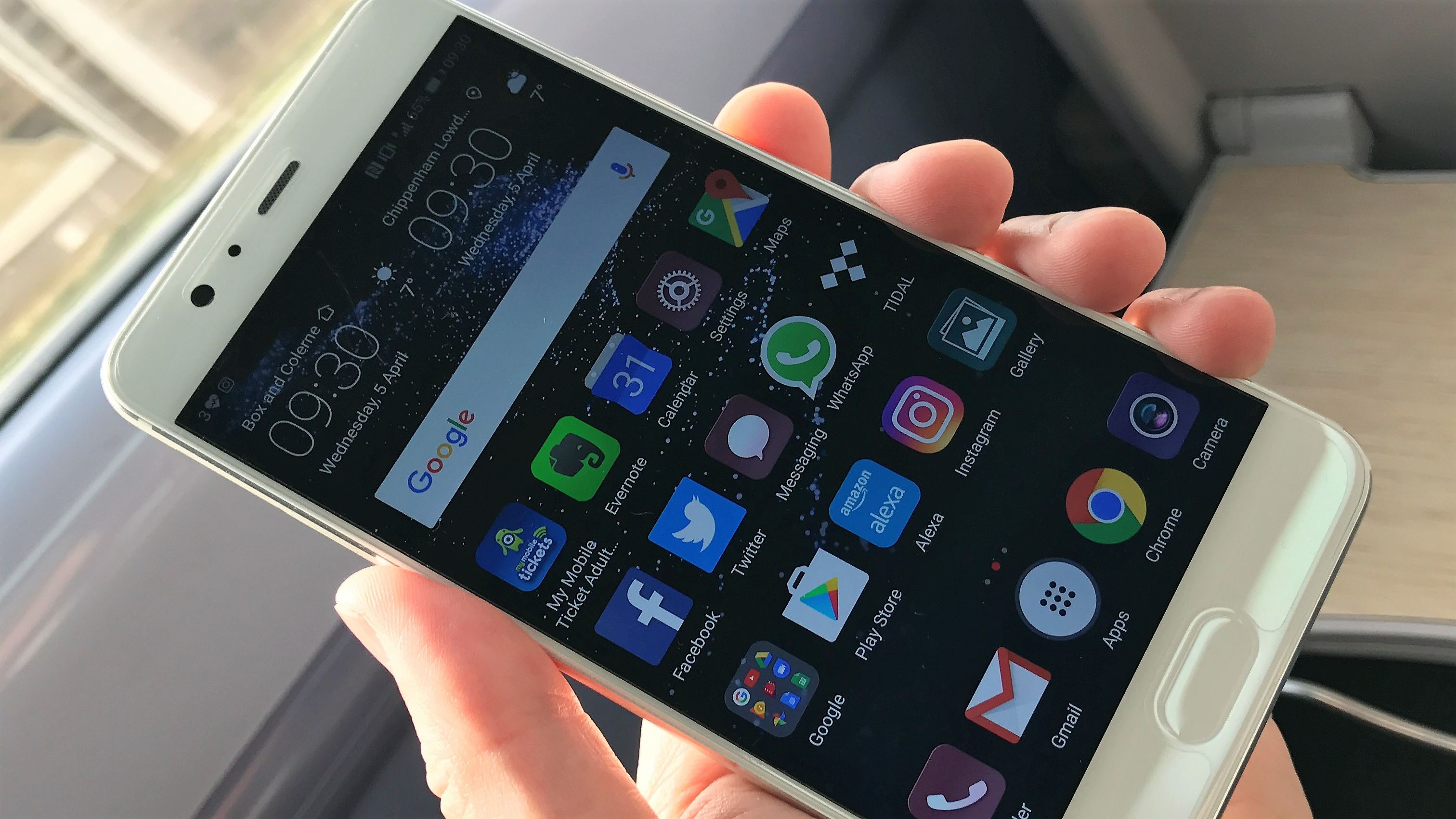
One of the best big screeners you can buy; svelte design, excellent camera and competitive pricing for the amount of storage.
-
+
Quick, feature-packed cameras
-
+
128GB of storage as standard
-
+
Fast fingerprint reader
-
+
We like the navigation key
-
-
Software still lags behind
-
-
No HDR display
-
-
Not waterproof or dustproof
-
-
Pre-installed apps need slimming down
Why you can trust T3

If you’re in the market for a large-screen phone, things are getting crowded. There are more to choose from than ever, including the iPhone 7 Plus, Samsung Galaxy S8+, LG G6 and Huawei’s own supersized Mate 9.
Things are getting BIG. Here at T3.com we’re big fans of large-screened phones and things sure have moved on over the last year or so. No longer is it ridiculous to have a near 6-inch screen on a smartphone.
At Mobile World Congress this year we saw the debut of Huawei’s mainstream flagship, the 5.1-inch P10. We do like the P10, but it is pricier than other past Huawei handsets. However, it also has a bigger brother, the P10 Plus, with a 5.5-inch screen just like the 7 Plus. And after using one for a few weeks we can tell you; this is a fantastic alternative to the iPhone 7 Plus and Galaxy S8 series.
Where the P10 Plus doesn’t do so well against other flagships is with a few of its specs - it isn’t waterproof, doesn’t have HDR support and doesn’t have wireless charging, for example - but this is a power handset to be reckoned with, featuring a powerful ‘octacore’ processor, 6GB of memory and a whopping 128GB of storage as standard in the UK (Huawei is making a 64GB version, too).
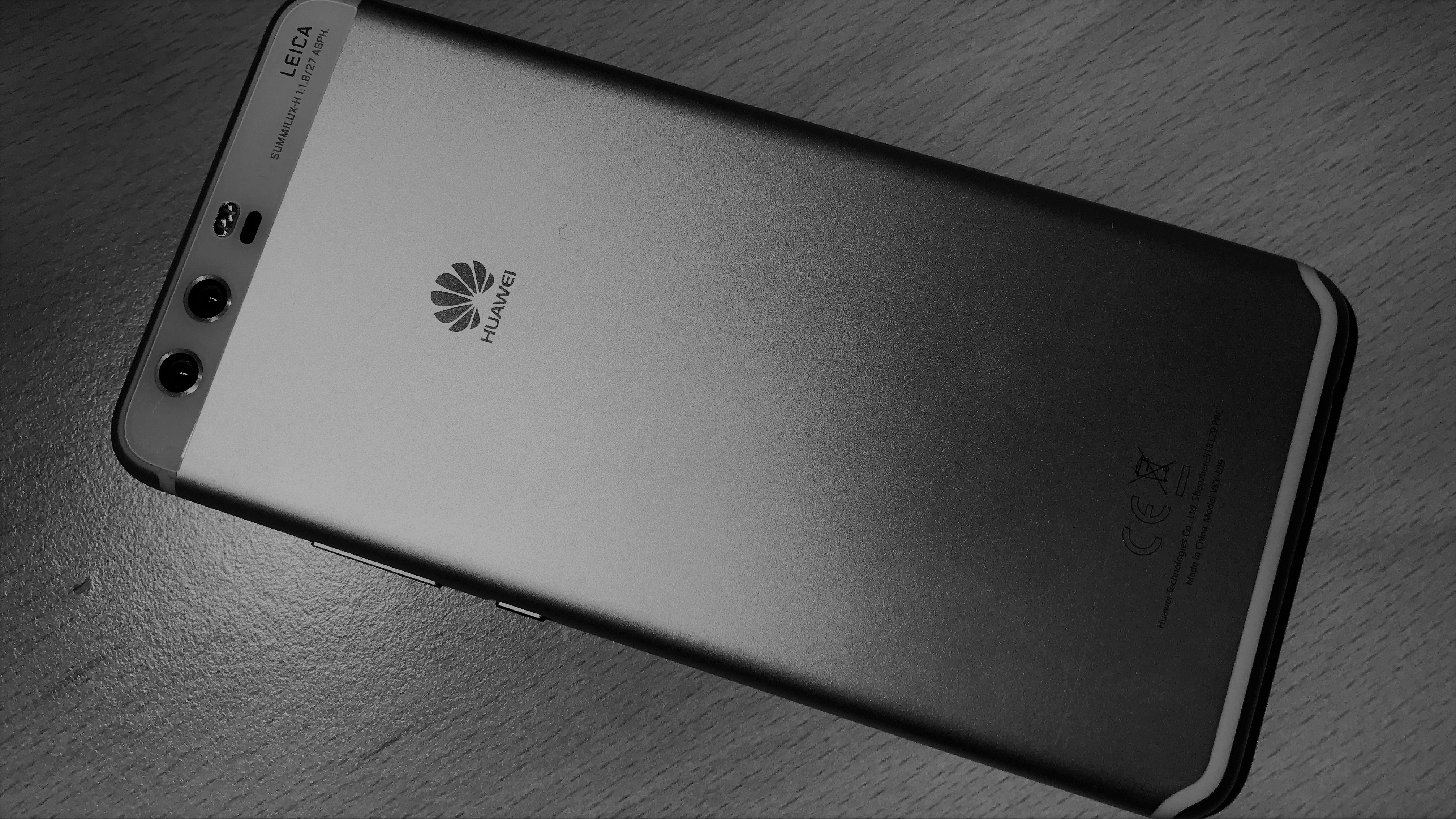
And then there’s the price. The P10 Plus represents much better value versus the base iPhone 7 Plus at £40 less SIM-free and with a huge amount more memory - 128GB versus 32GB of the base iPhone. Indeed, the SIM-free iPhone 7 Plus with 128GB of memory is £140 more than the P10 Plus. It’s also 0.3mm thinner than the 7 Plus and avoids having a camera lens bulge unlike the 7 Plus, too.
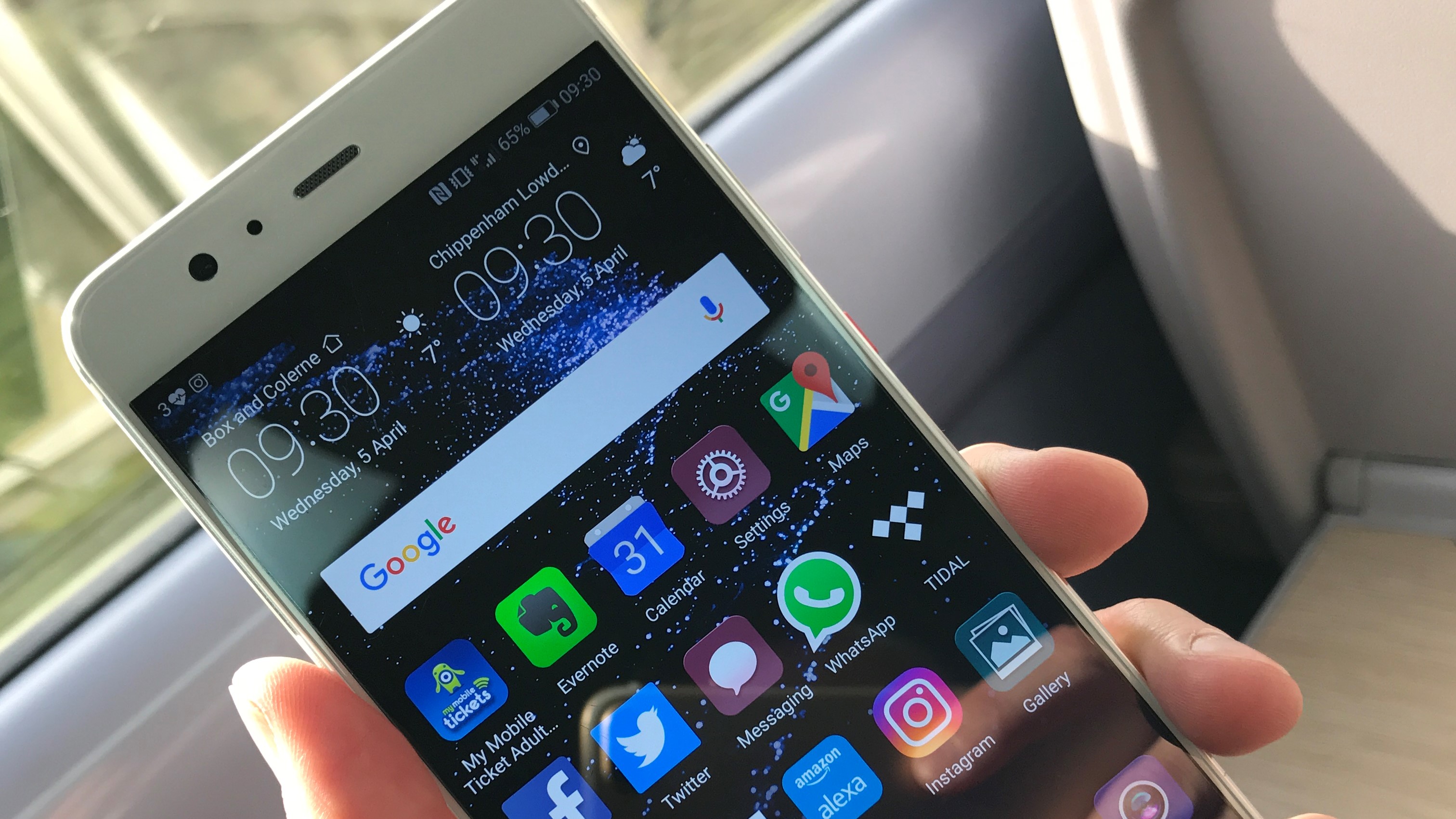
The P10 Plus is available in various colours including Pantone’s colour of the year (known as ‘greenery’) but it looks like you’ll find it most stores and pockets in one of the standard colours - silver (like our review sample), gold or black.
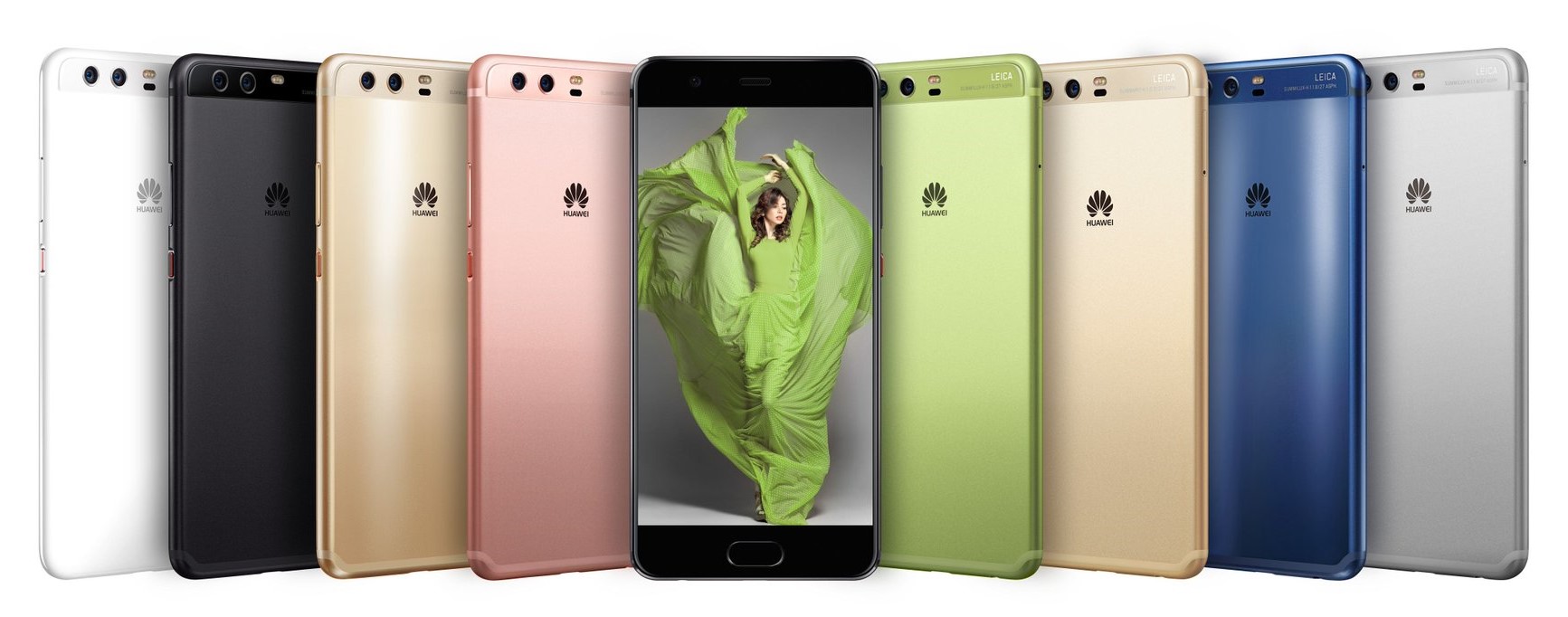
Based around Huawei’s EMUI 5.1 skin running atop Android 7.0 Nougat, the software still needs some polish. While other key Android manufacturers either plump for stock Android or increasingly try and skin in a very restrained fashion, Huawei’s EMUI still feels like it lags behind even if it has come on a lot in terms of usability over the last couple of years - the app drawer is back if you want it.
The most irritating thing about EMUI is actually the Phone Manager app which pops up regular notifications about power intensive apps, but just enables you to close them rather than do anything constructive. What’s more, is it really necessary to close apps in 2017?
A lot of our issues are with the Huawei themes, many of which just aren’t quite to our taste. There are a lot of themes to choose from, however,
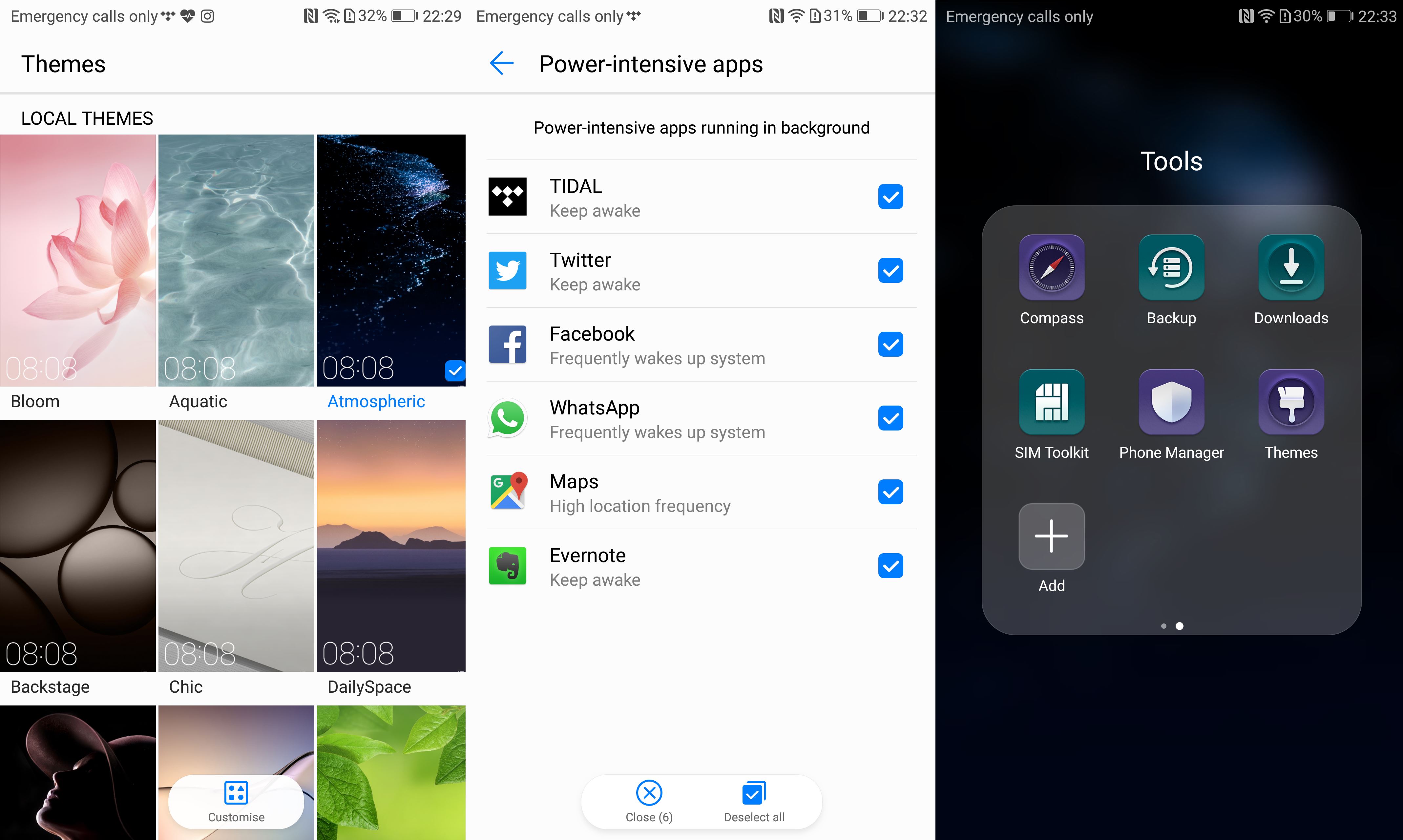
There’s still a problem with dupe apps for example - the phone comes pre-loaded with Google Calendar and a Huawei Calendar app meaning that when you enter your Google Account details into the phone you get two calendar apps sending you notifications for your next meeting. This is OK if you’re tech savvy and know how to turn notifications off or uninstall one of them. For others it just represents a poor user experience.
Moving on from the software, we’ve been big fans of Huawei’s hardware since the P8, and loved using the P9, Nexus 6P (a particular favourite) and recently the Mate 9.
The P10 line marks somewhat of a departure for Huawei in terms of earlier models - the fingerprint reader has been moved from the back onto a new Navigation Key. Interestingly, Samsung’s new S8 line has done exactly the reverse because of the lack of real estate around the screen on the front. But where Huawei’s rear fingerprint reader placement made sense, Samsung’s is placed right next to the camera, which just isn’t as simple and will take a little getting used to.
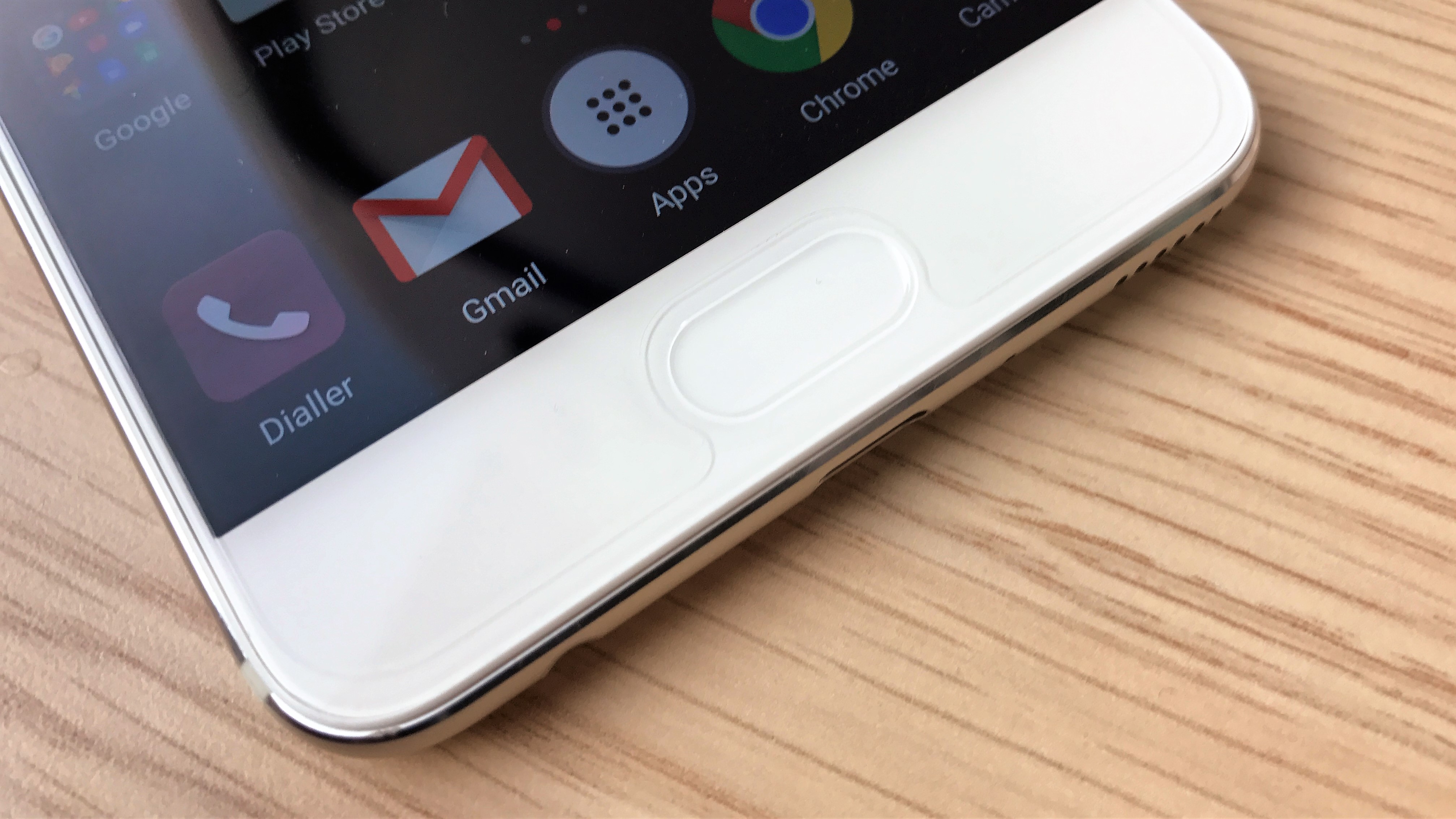
Huawei’s Navigation Key is one of those user interface features that will device opinion and to be honest we were initially unconvinced. Why replace the standard Android on-screen three key navigation with something completely different? But we’re quite happy to admit we were wrong; it takes so little time to get used to and works so well. It’s a single quick press for back. Press and hold to go back to the home screen. Swipe left or right to get to the app switcher. Swipe up to get to the Google app for search and more.
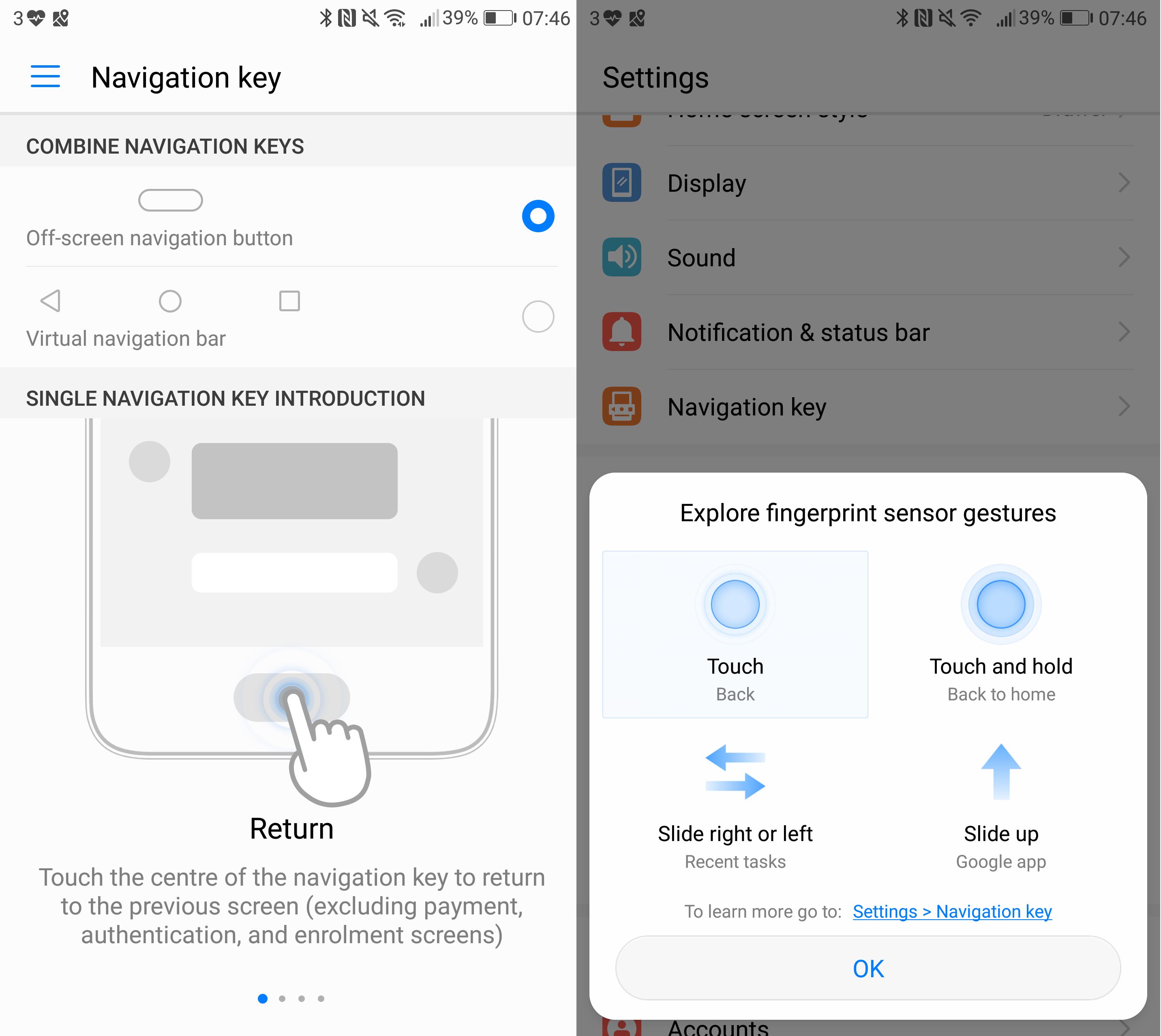
The key is also a fingerprint sensor and my - it is FAST to respond. If it reads your fingerprint OK - which it does more often than most recent fingerprint readers we’ve used - you barely notice the phone unlock.
However, the days of on-bezel controls are numbered for high end phones. Expect the P11 to have the same control but perhaps under the screen; that seems to be the way key user interface buttons are heading.
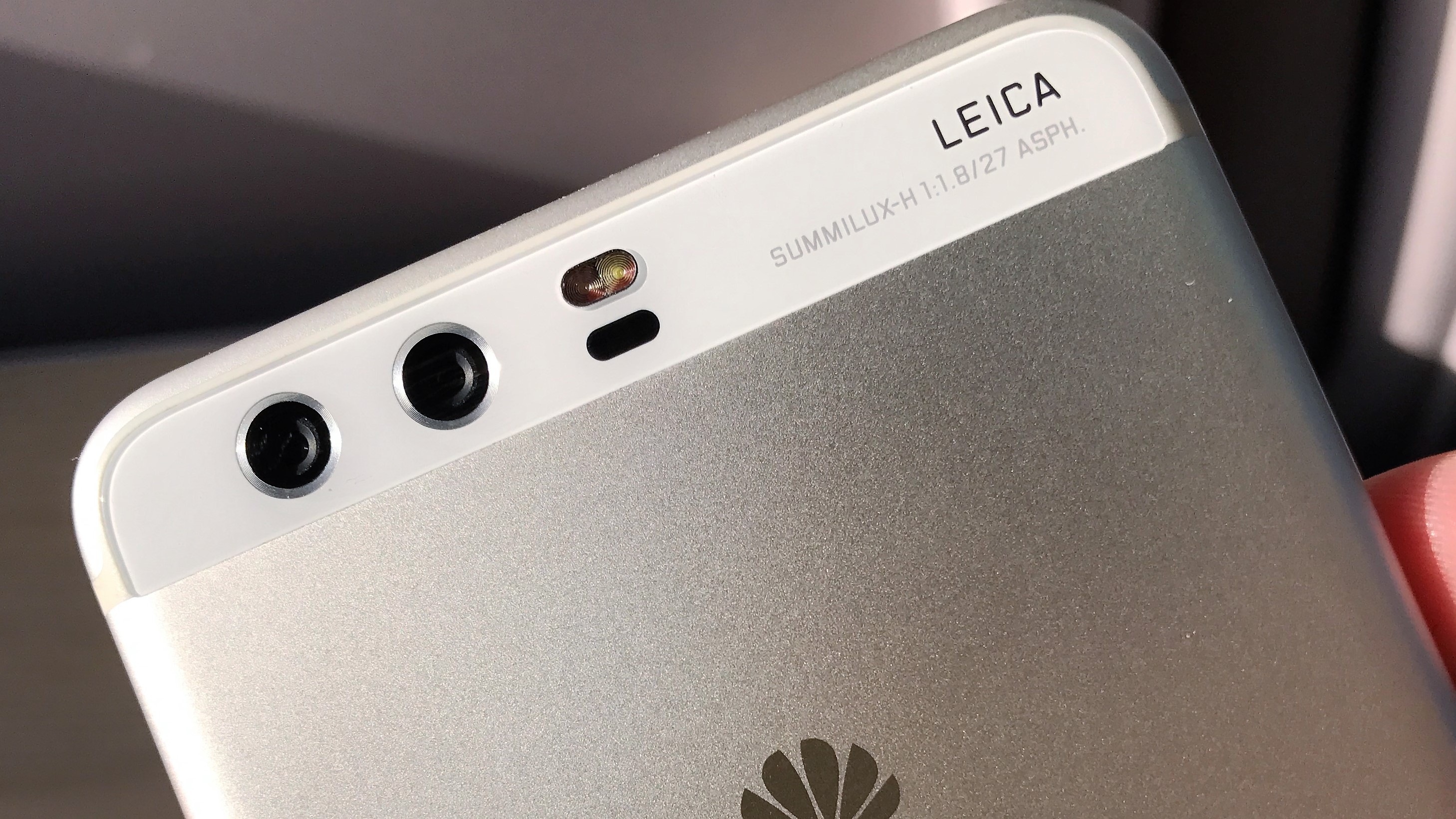
Everyone loved the Leica-engineered dual camera in last year’s Huawei P9 and alongside the Galaxy S7 camera (also in the S8 lineup), iPhone 7 Plus and Google’s Pixel snapper, it was one of the top camera phones of last year.
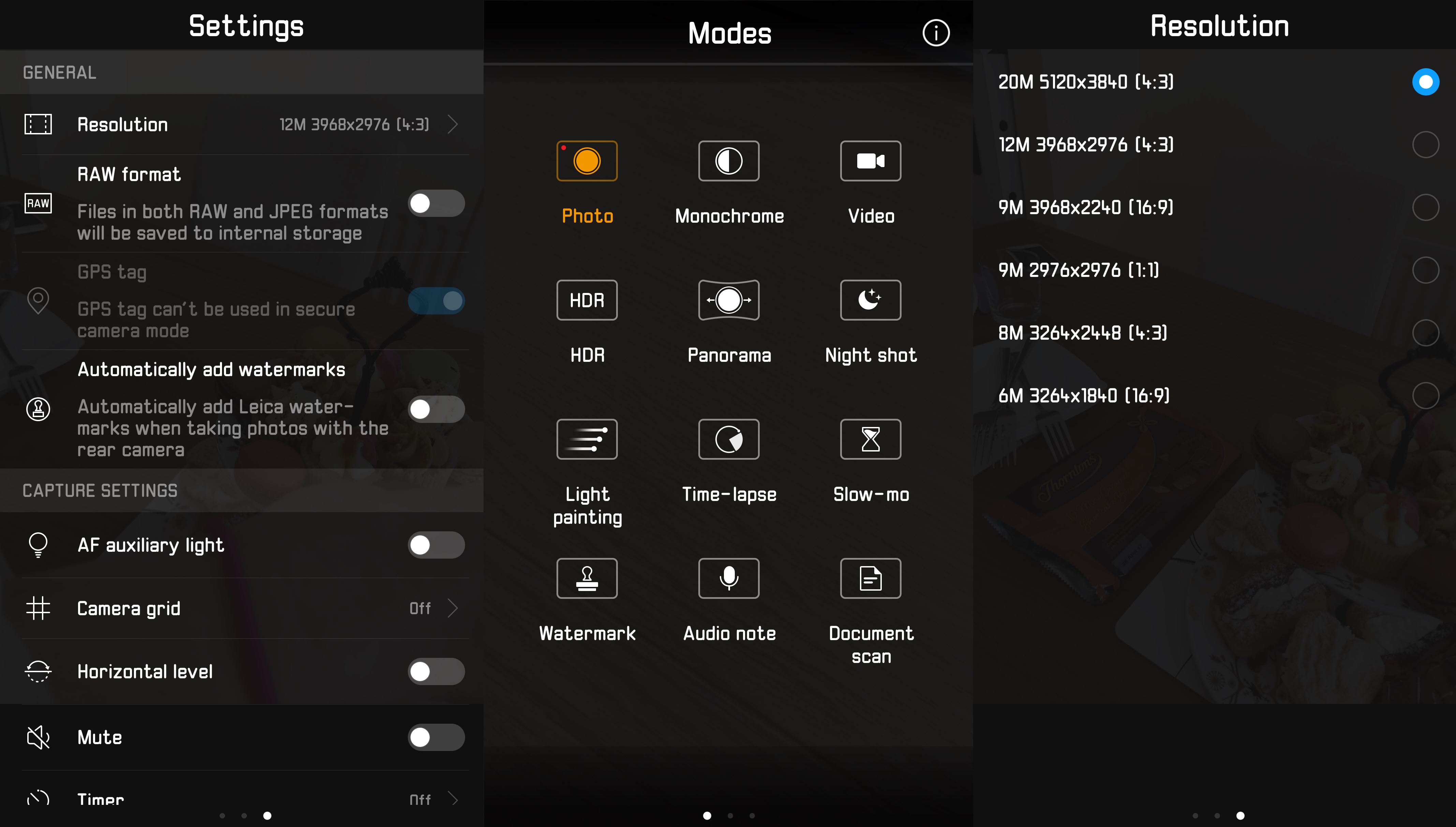
The P10 Plus takes the same dual camera concept from the P9 and P10 but with upgraded Summilux lenses. Again they’re placed neatly in the strip along the top of the phone and this makes for a very neat design. We also love the P10 Plus cameras app which gives you access to a Pro mode giving you access to ISO, white balance and autofocus settings among many other features. There’s also a Wide Aperture mode as well as Portrait - with the depth of field effect we’re now seeing everywhere - filters, panoramic, HDR and more.
Huawei P10 Plus camera samples - click through the gallery

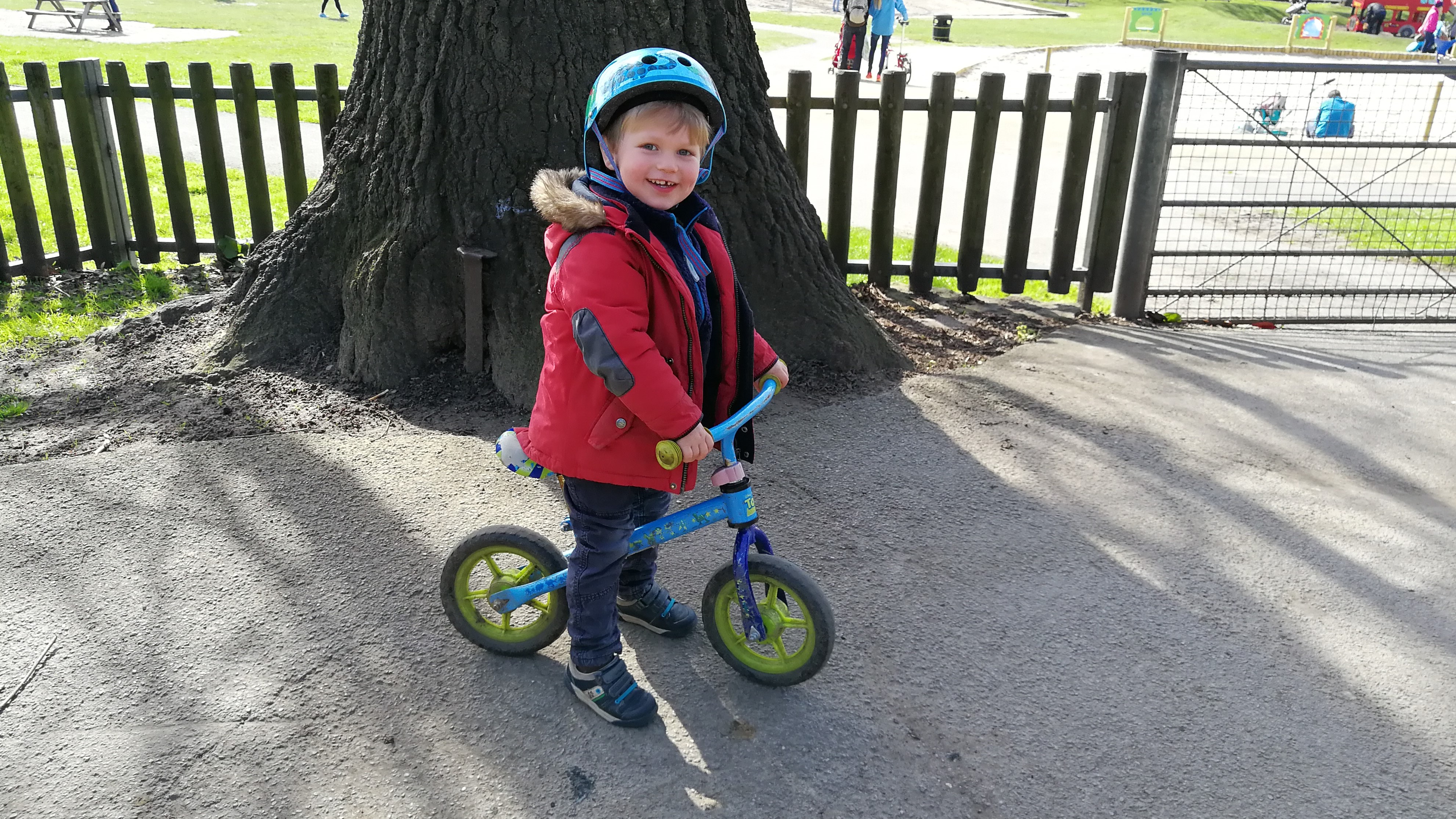







Low light photos are especially good, while we got some stunning shots using the 20MP monochrome lens - in fact we often liked the results a lot more than the same shot in colour (the regular camera is a 12MP F1.8 sensor and the front camera is 8MP). Here's a panorama shot with the P10 Plus as well.

The display is also a credit, with colours that pop a Quad HD 1,440 x 2,560 resolution (540ppi, way more than the 400ish ppi of the 7 Plus and a bit shy of the Galaxy S8).
Our reviewer wasn’t thrilled with the battery life of the standard P10, but the 3750 mAh battery inside the P10 Plus means it holds its charge fairly well except - predictably - when downloading a lot of data over cellular. We found we were easily getting over 24 hours of use and standby from the handset, only needing to charge part way through the next morning.
What else? There are some nice little design touches including a red-edged power button (below). There’s a rarely-seen IR blaster in the top of the phone, the headphone jack is retained at ythe bottom alongside USB-C for charge and data.
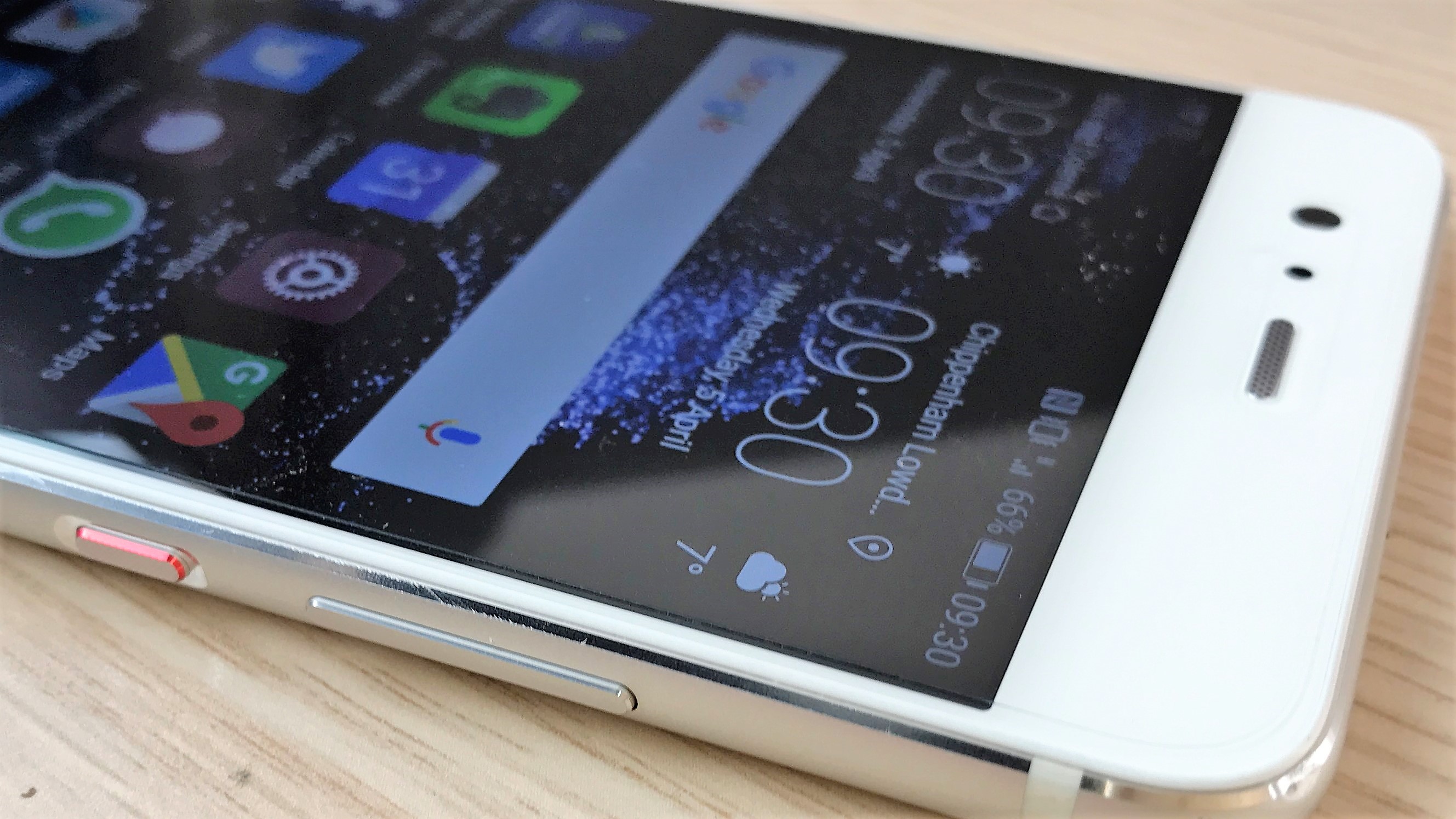
The SIM tray also has space for a microSD card alongside for expandable storage. Finally - and interestingly - there’s a pre-fitted screen protector. We’ve seen this before from some manufacturers and we’re sure the facts show that it minimises returns and problems. It doesn’t look too bad in our opinion and you are able to peel it off.
However, be warned that if you do peel, your display will instantly become a fingerprint magnet. The screen doesn't appear to have any fingerprint-resistant (oleophobic) coating at all so expect smears and general greasiness. Nice!
T3 Verdict
Despite a few flaws, we’re big fans of the power-packed and fun P10 Plus. It offers much more than the standard P10 and is a serious competitor to the iPhone 7 Plus.
The design is pretty special, the camera superb and the pricing competitive for the amount of storage. In short, it's one of the best big screen phones you can buy, with a generally awesome spec sheet.
We’ll see how the S8+ compares soon and that will be an interesting battle, as while the screen on that handset may impress, some of the tariffs and SIM-free pricing we’re seeing are rather expensive.
Now check out our standard Huawei P10 review as well as this year's best smartphones.
Sign up to the T3 newsletter for smarter living straight to your inbox
Get all the latest news, reviews, deals and buying guides on gorgeous tech, home and active products from the T3 experts
Dan is a previous Editor for T3.com and covered the latest in computing, home entertainment and mobile tech. He's also the former Deputy Editor of TechRadar and former Editor of Lifehacker UK. Dan has written for numerous computing and lifestyle magazines and has also written a book, too. You'll see him pop up in numerous places, having been quoted in or on The Sun, BBC World Service, BBC News Online, ITN News, BBC Radio 5Live, BBC Radio 4 and Sky News Radio.
-
 This is the sound of BMW's upcoming Neue Klasse EVs
This is the sound of BMW's upcoming Neue Klasse EVsHas BMW cracked the problem of making EVs sound fun with its next-gen soundscape for its Neue Klasse cars
By Alistair Charlton Published
-
 Build unshakeable core strength with a kettlebell and these three exercises
Build unshakeable core strength with a kettlebell and these three exercisesAdd this to the end of your workout to fire up your midsection muscles
By Bryony Firth-Bernard Published
-
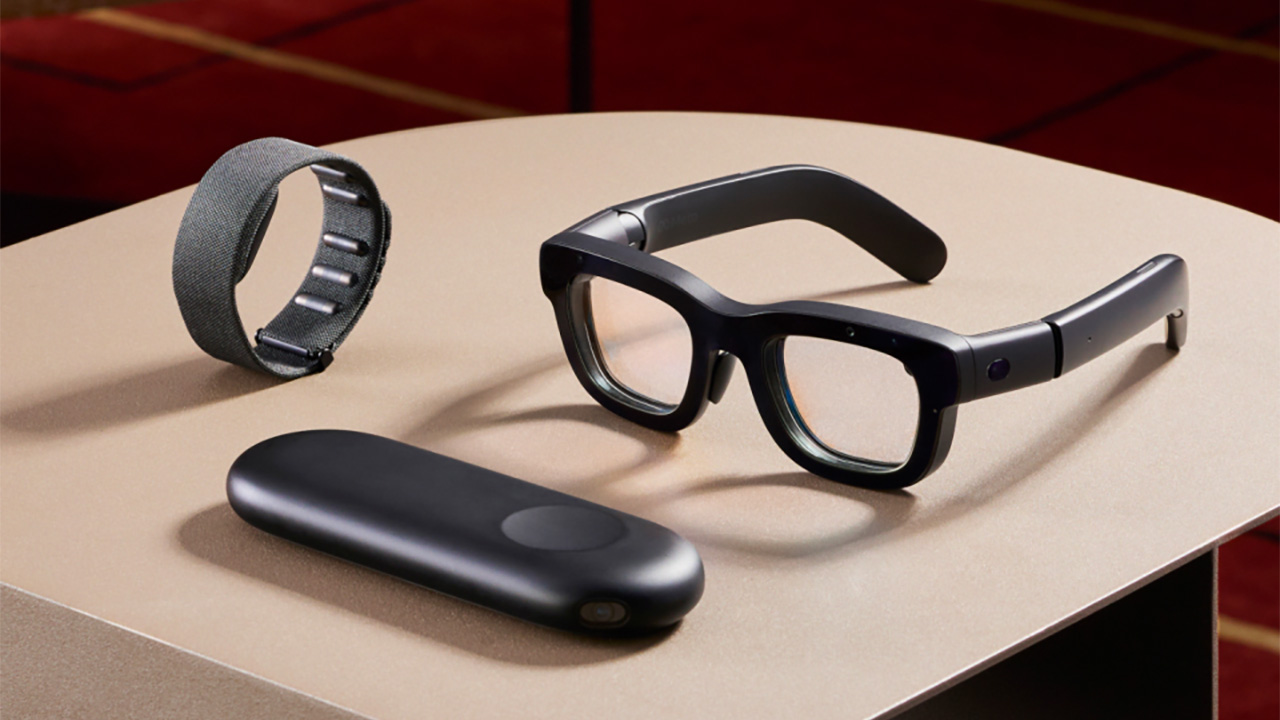 The next big tech battlefield is AR Glasses – and Apple is ready to fight
The next big tech battlefield is AR Glasses – and Apple is ready to fightTim Cook is said to "care about nothing else"
By Sam Cross Published